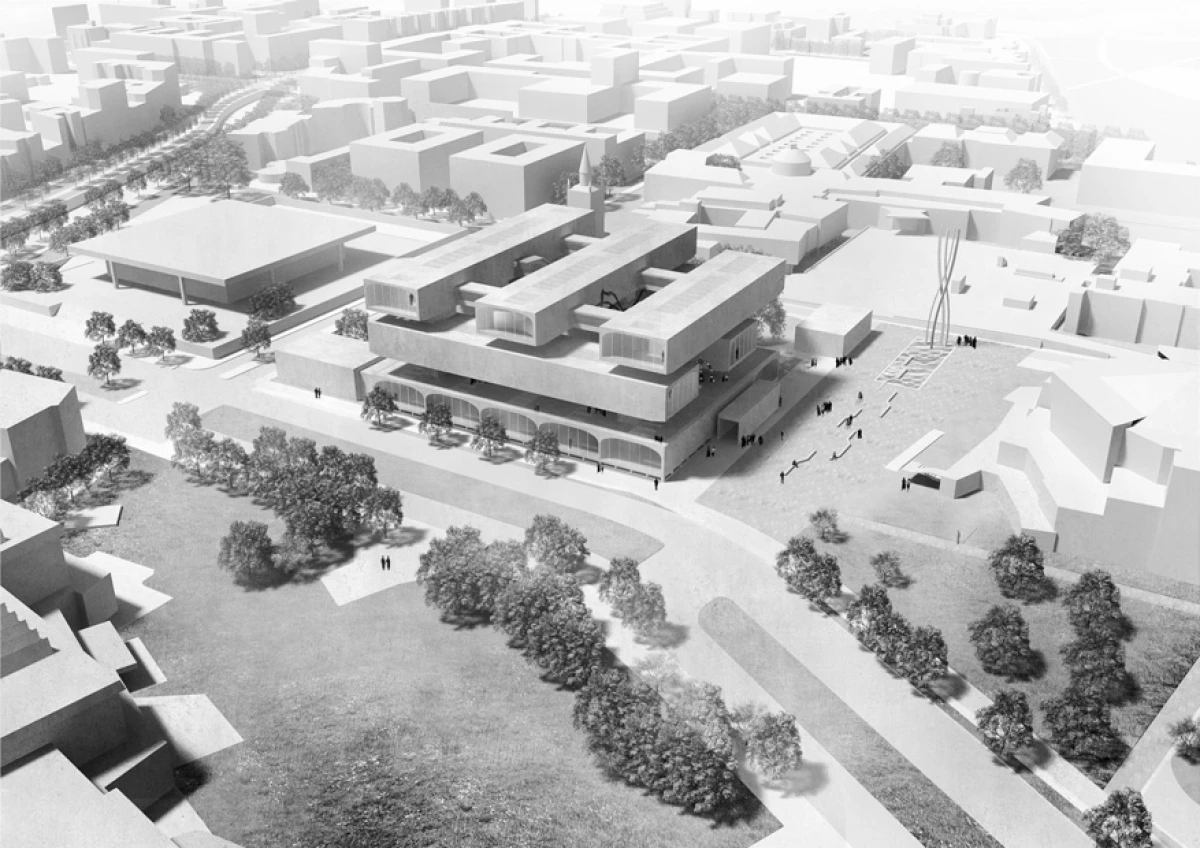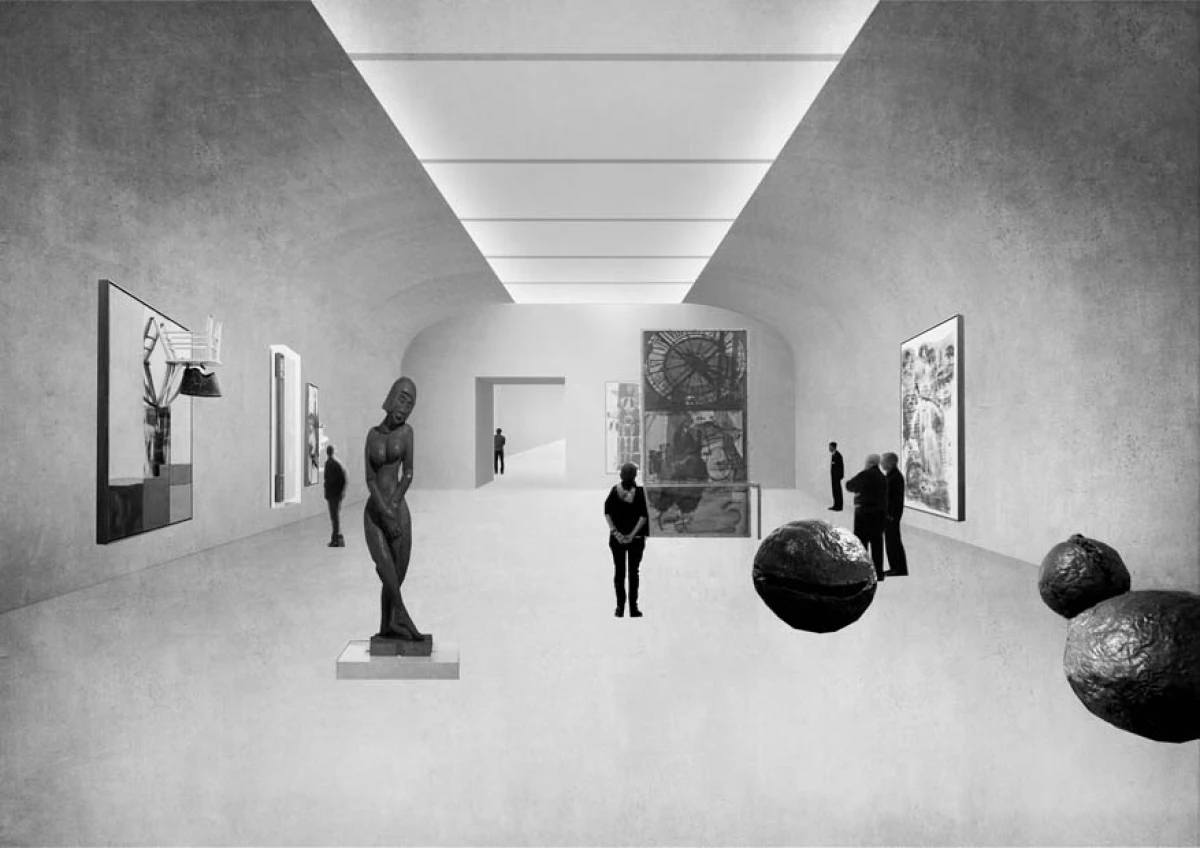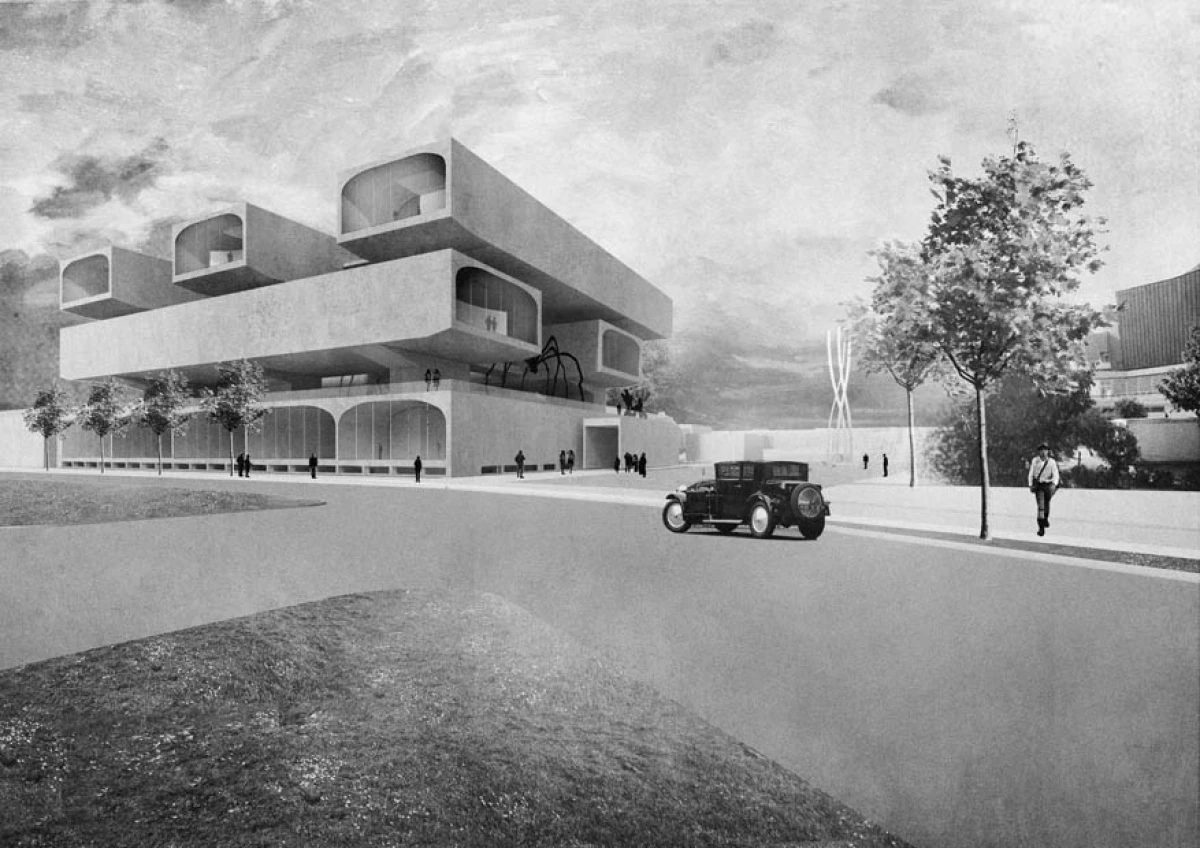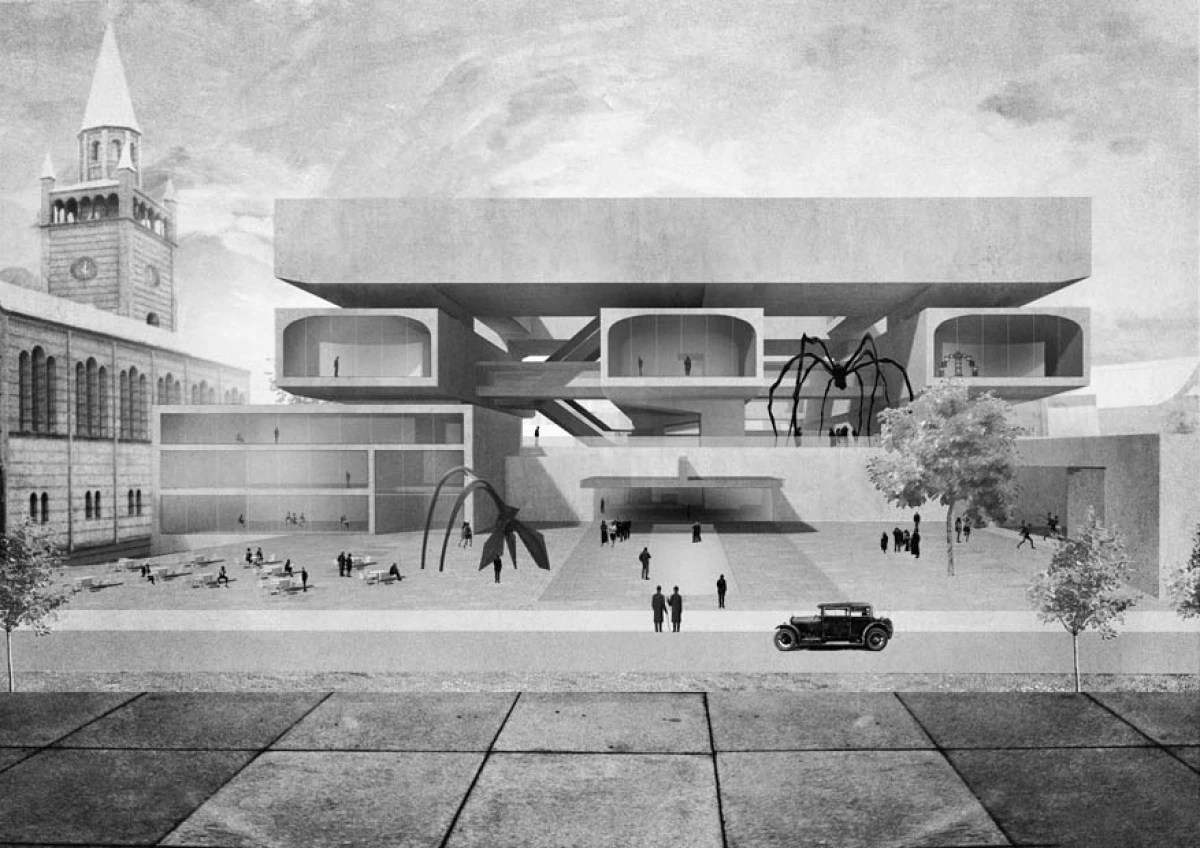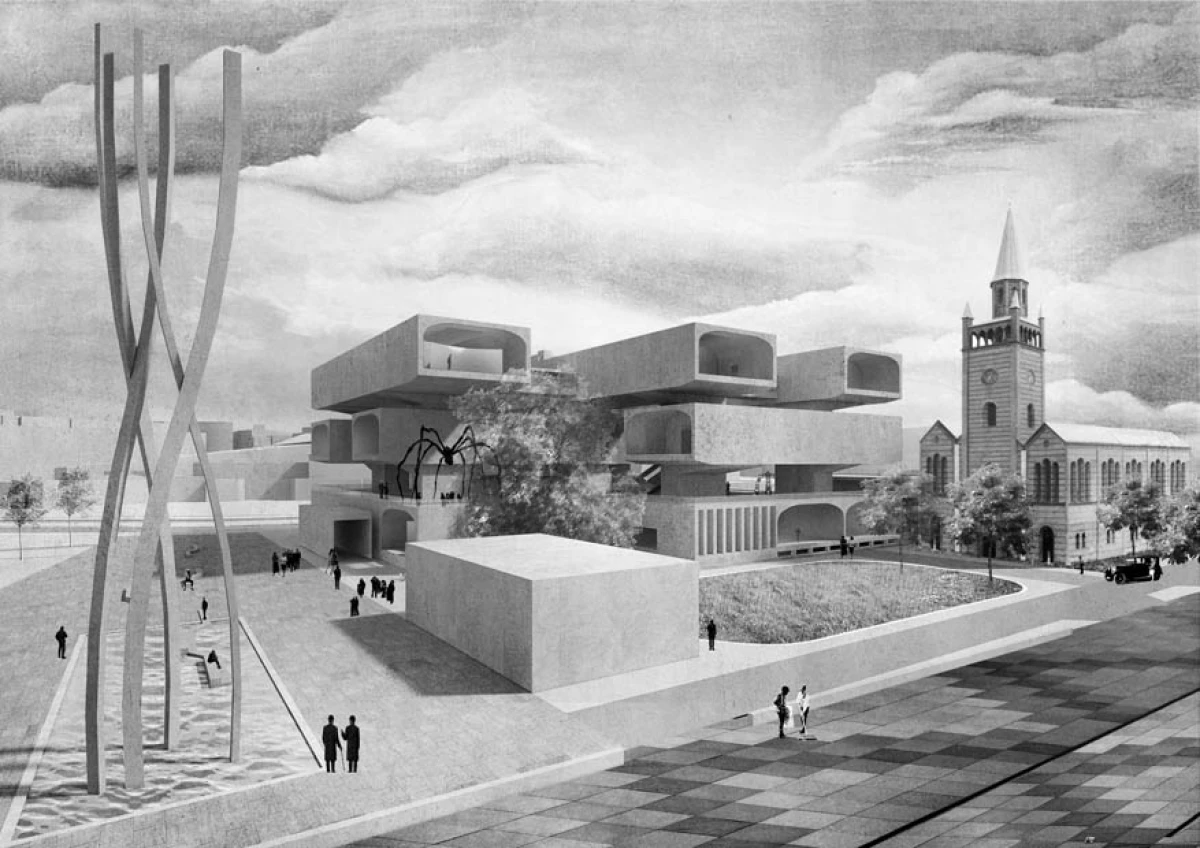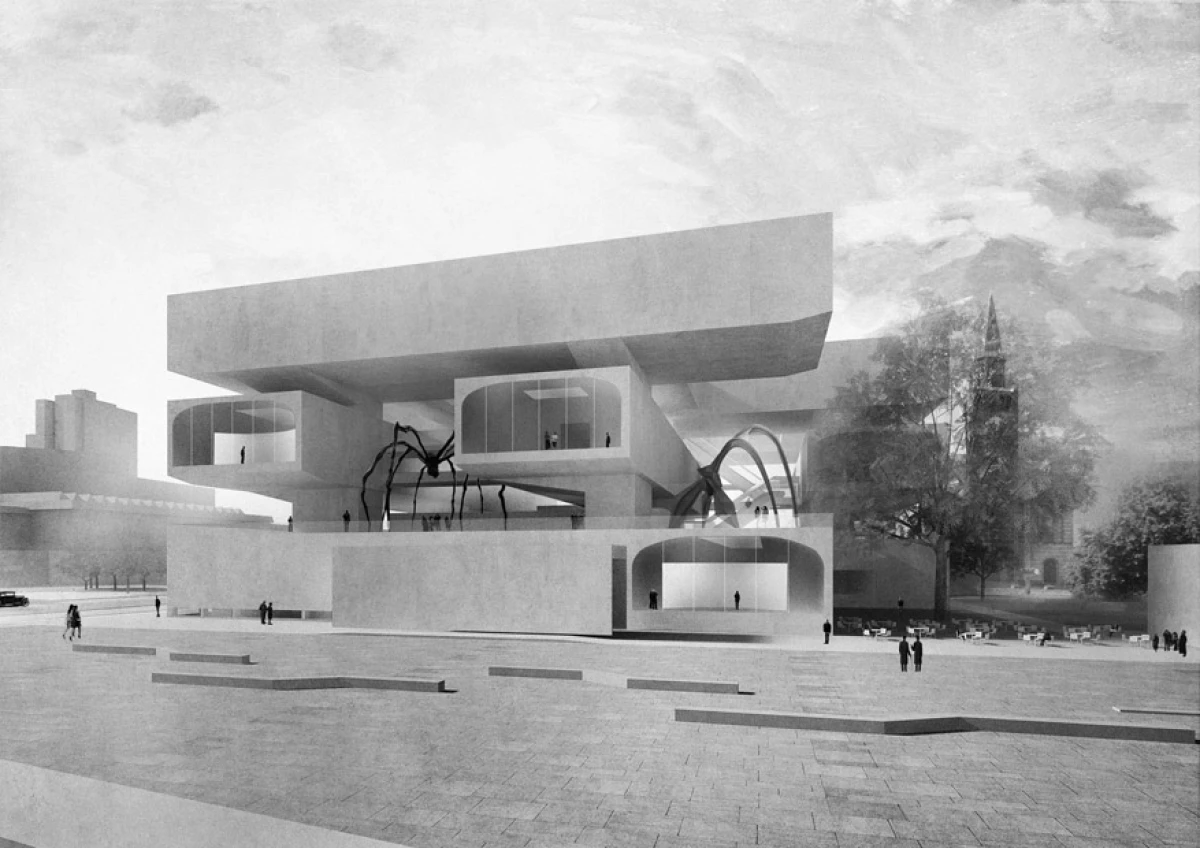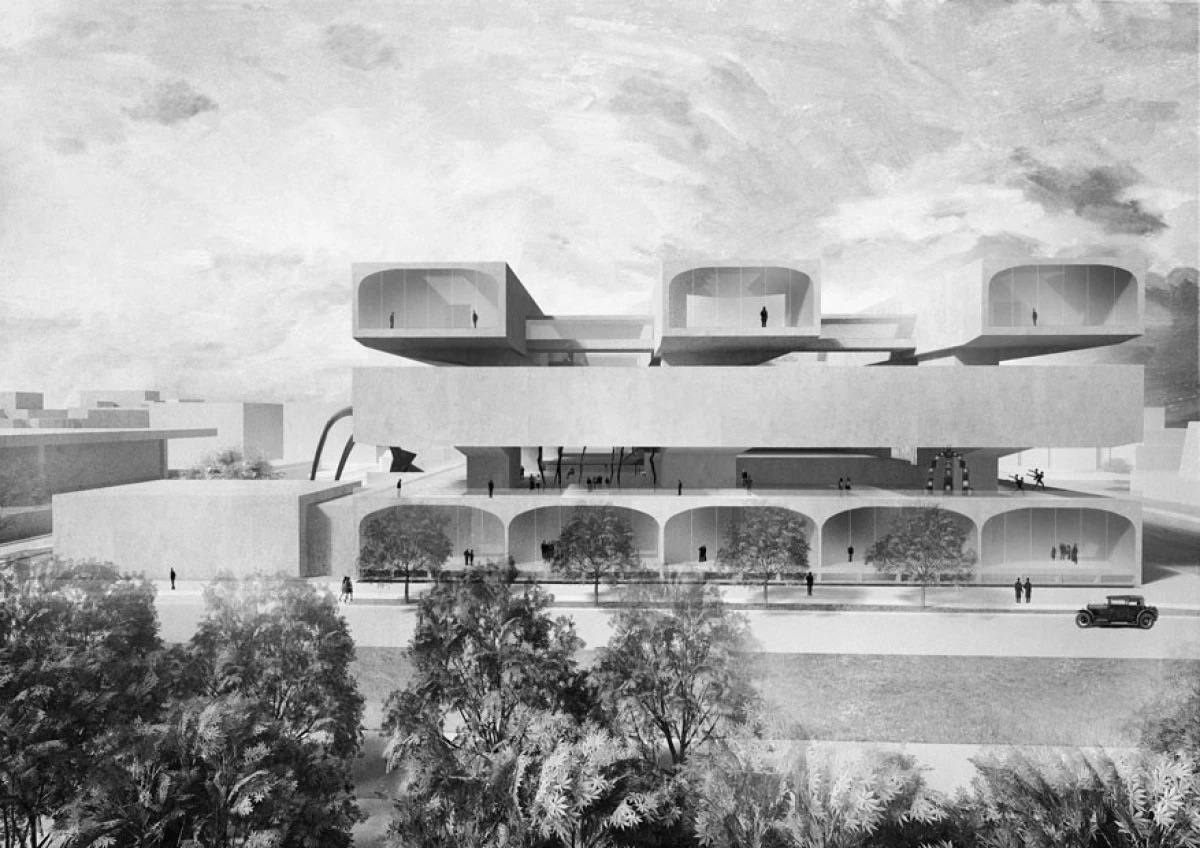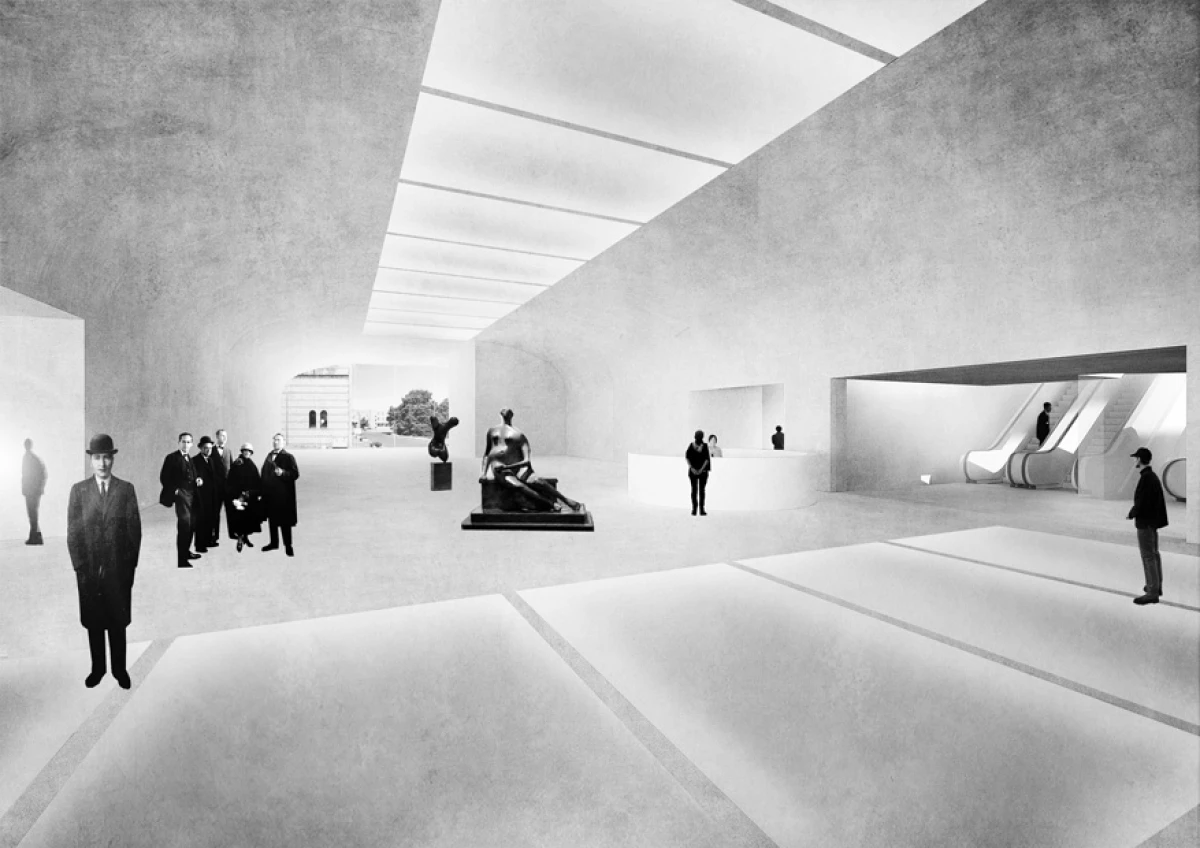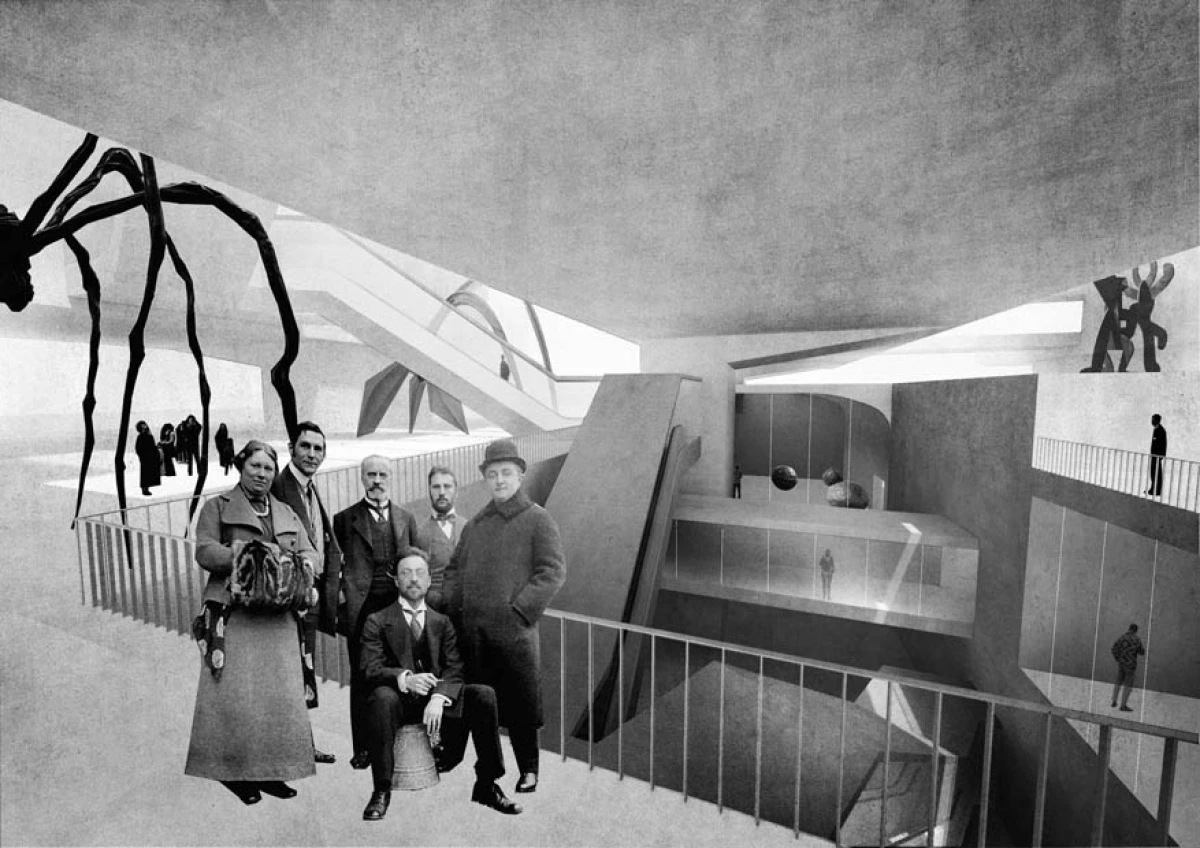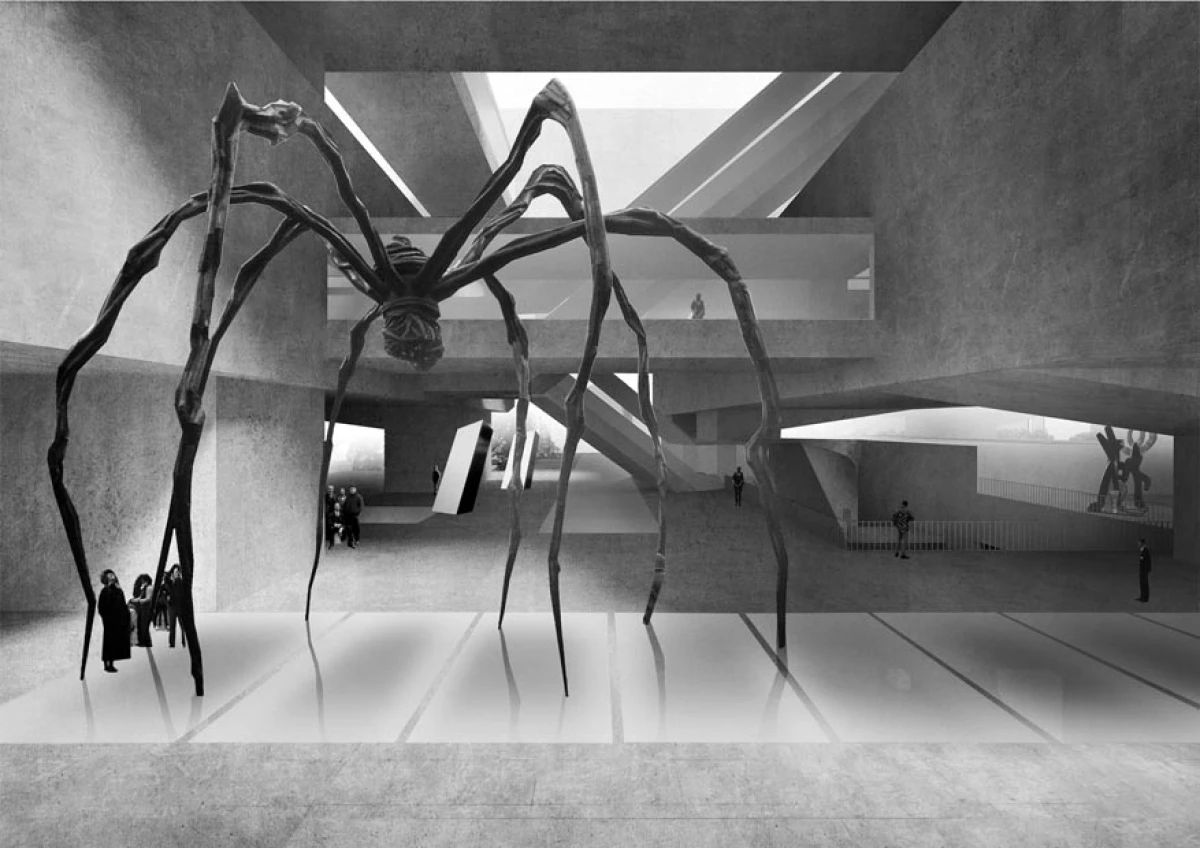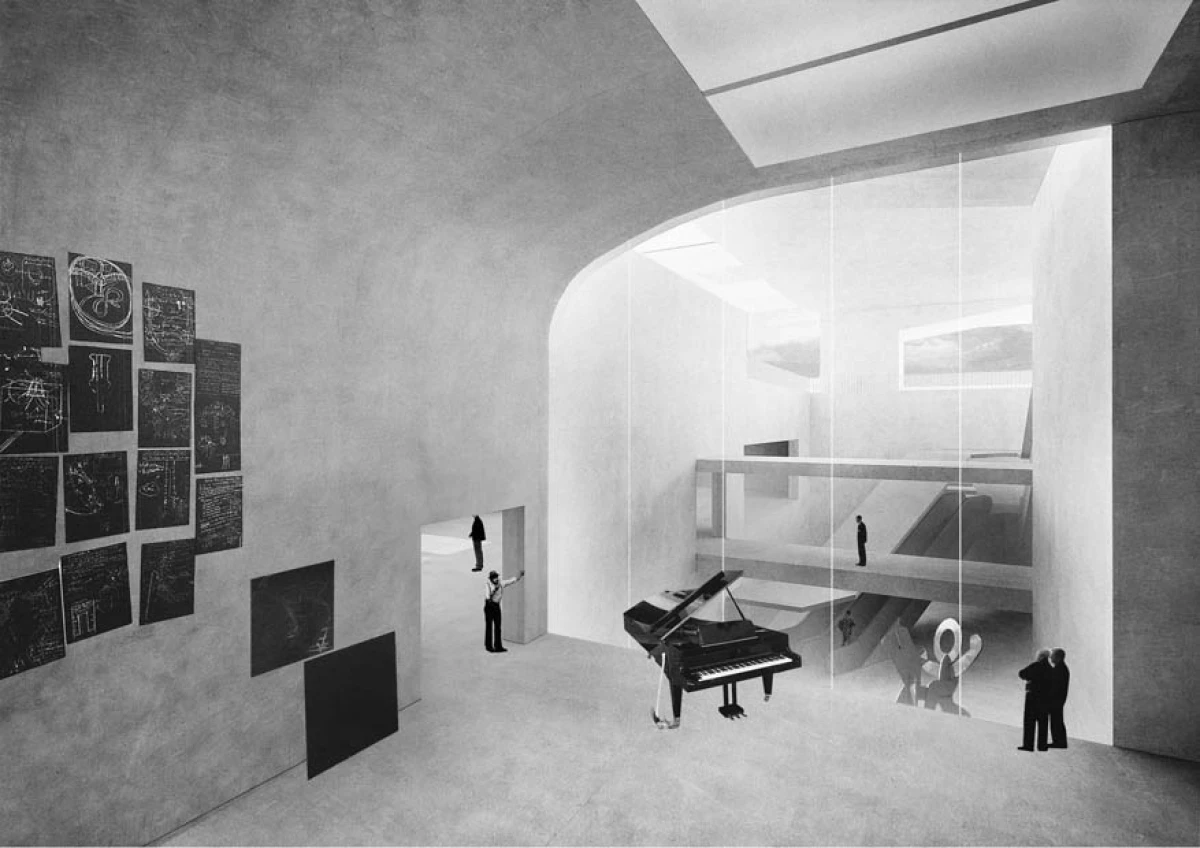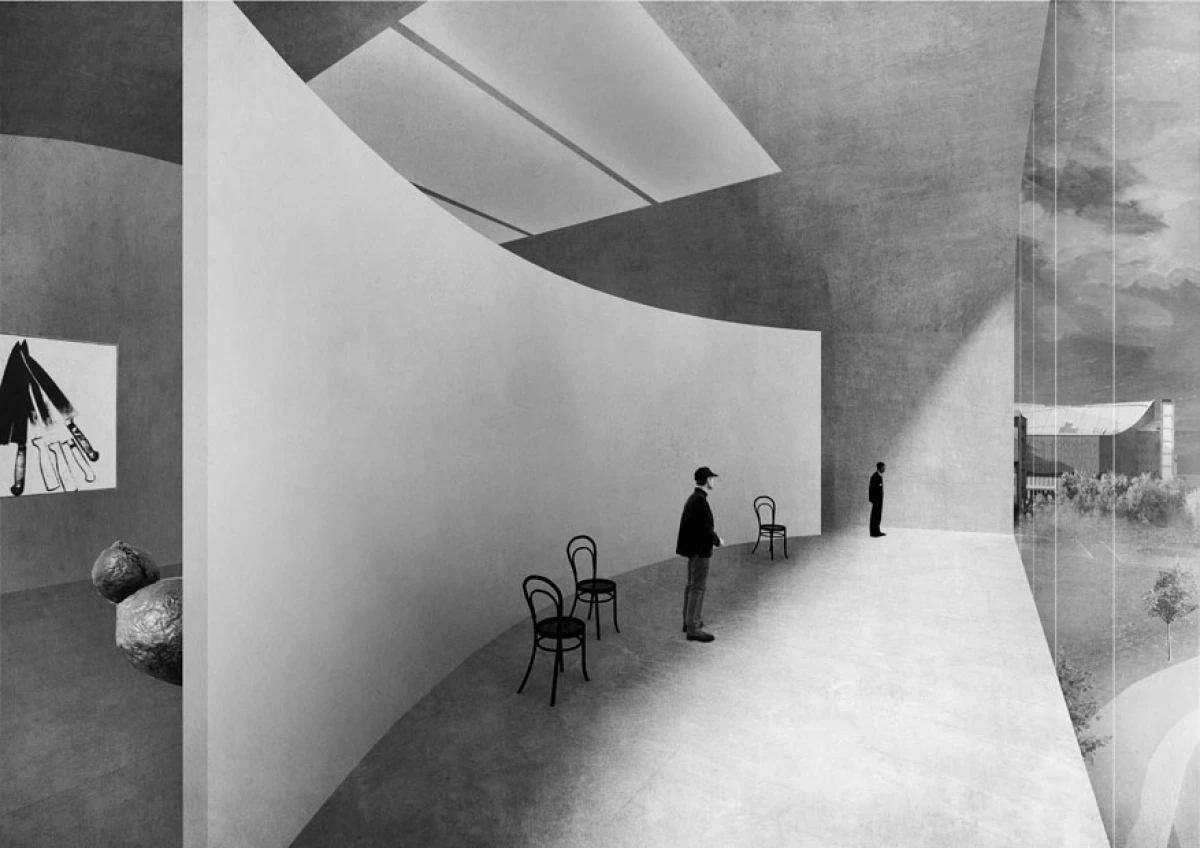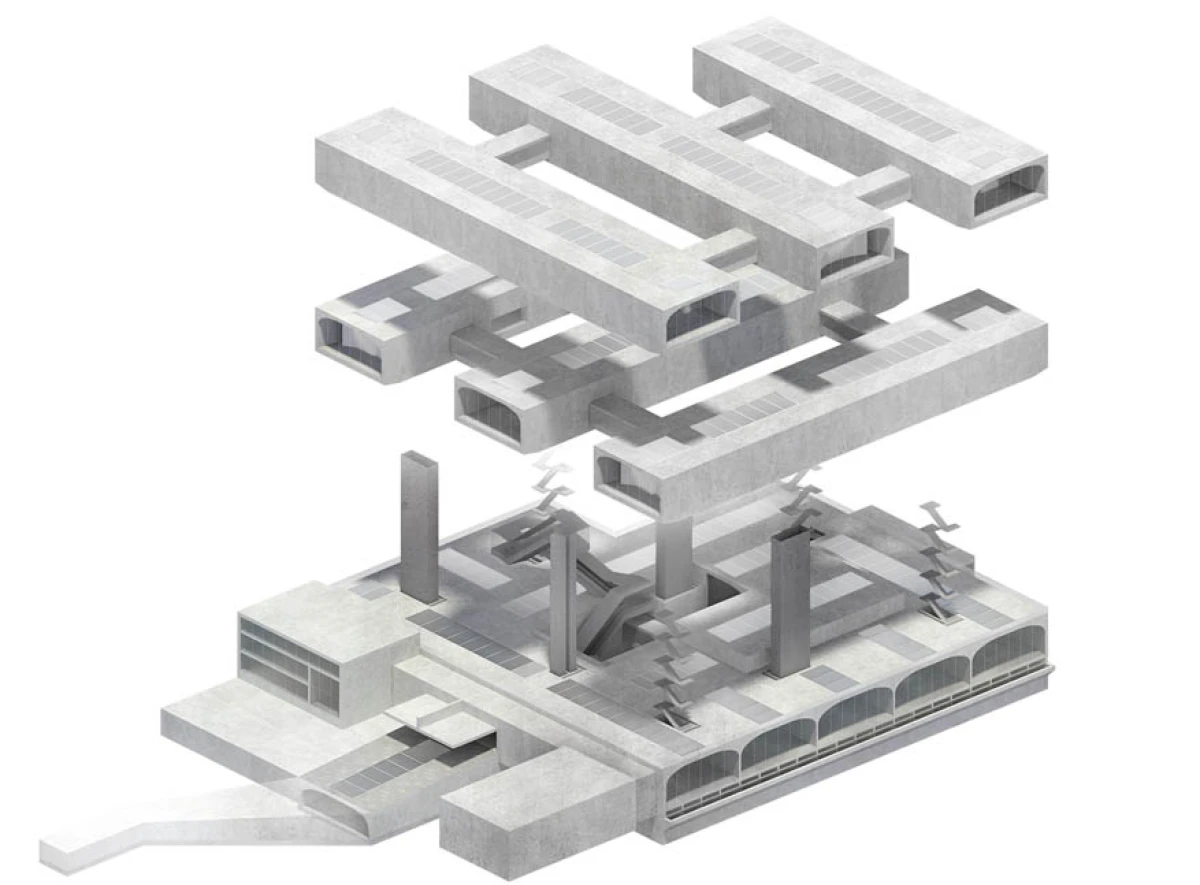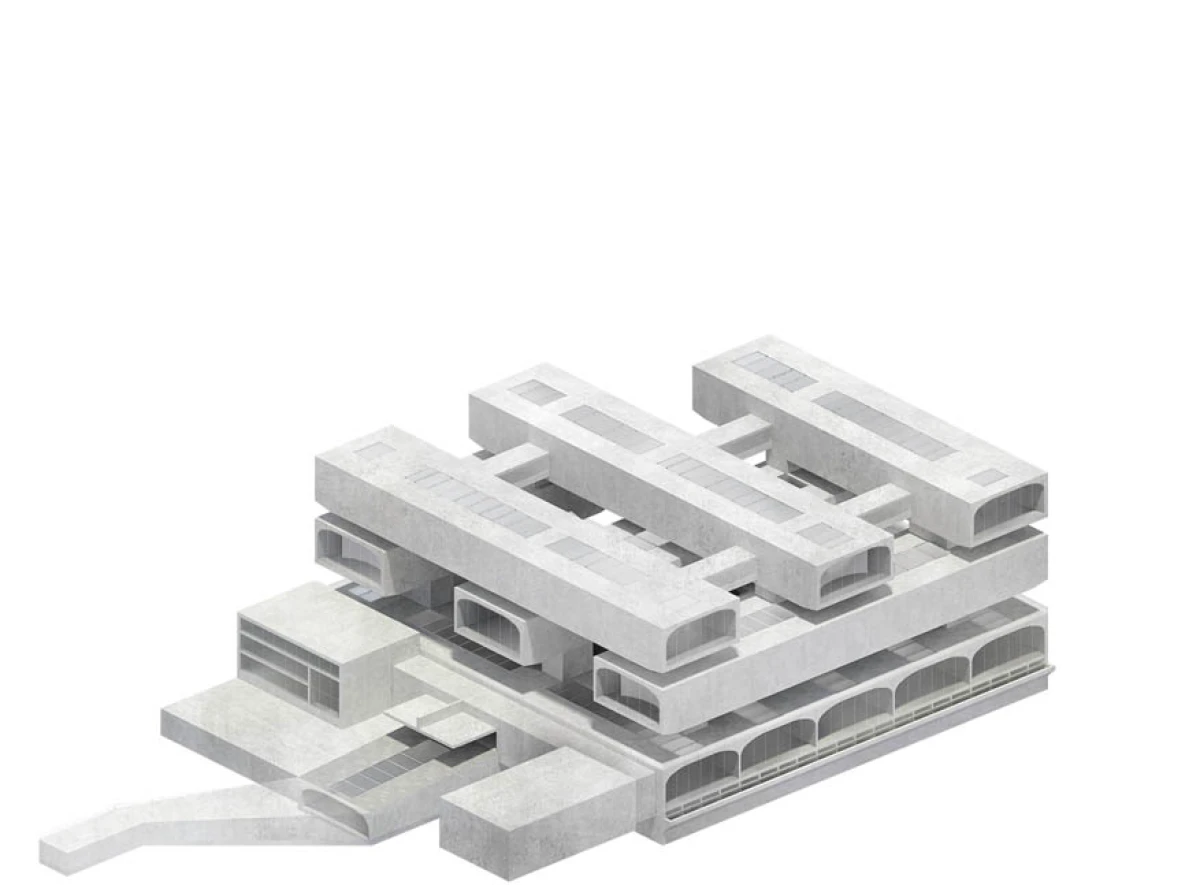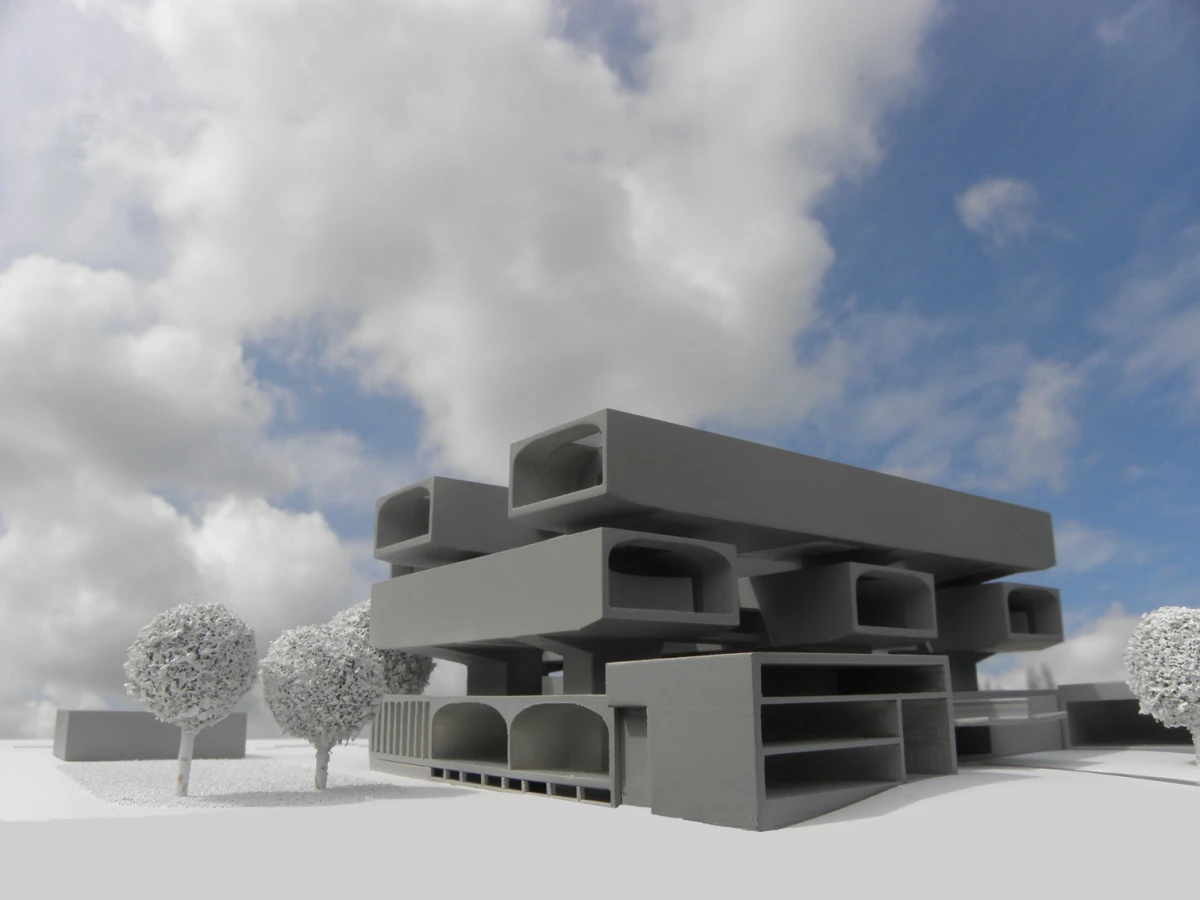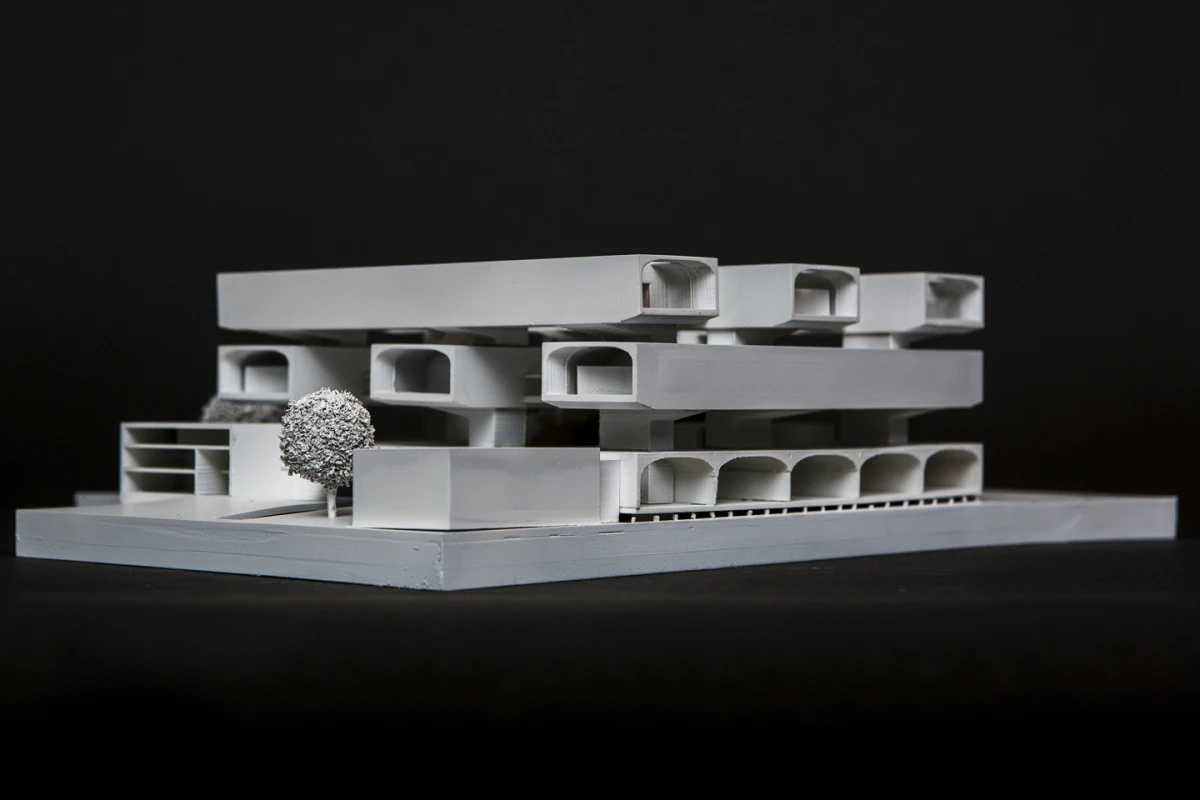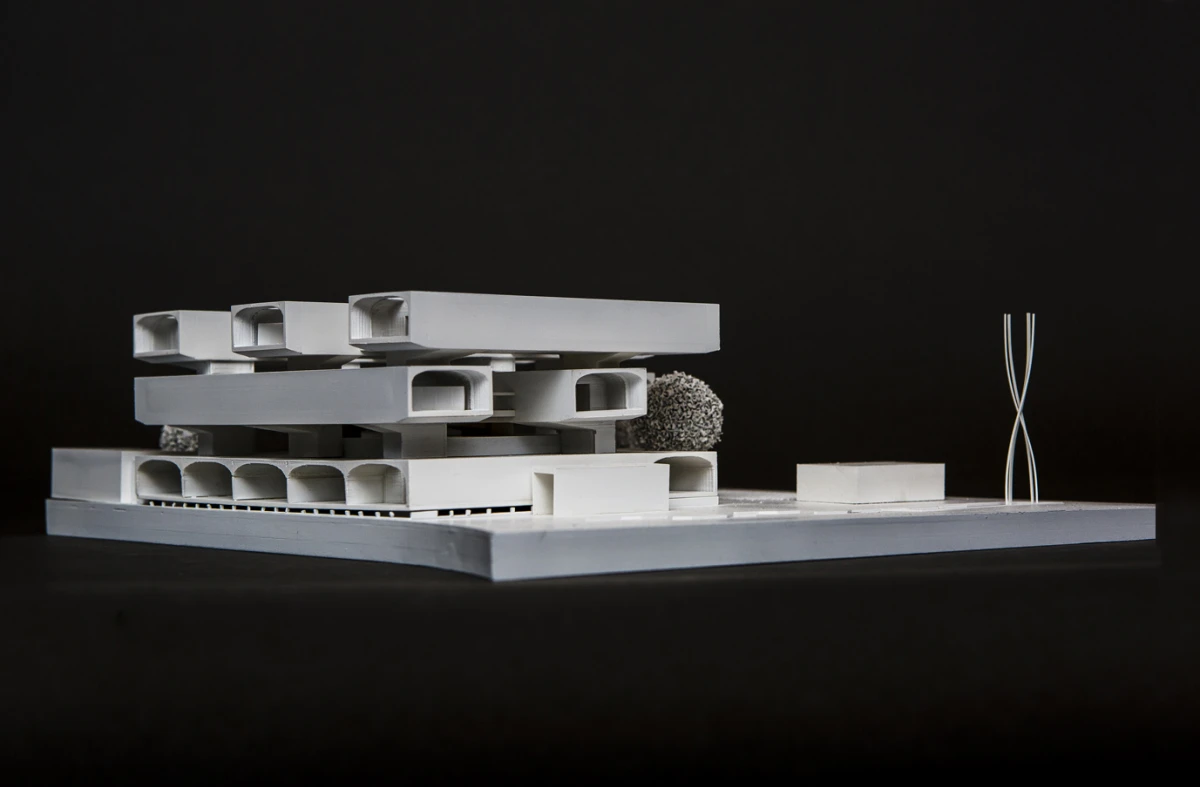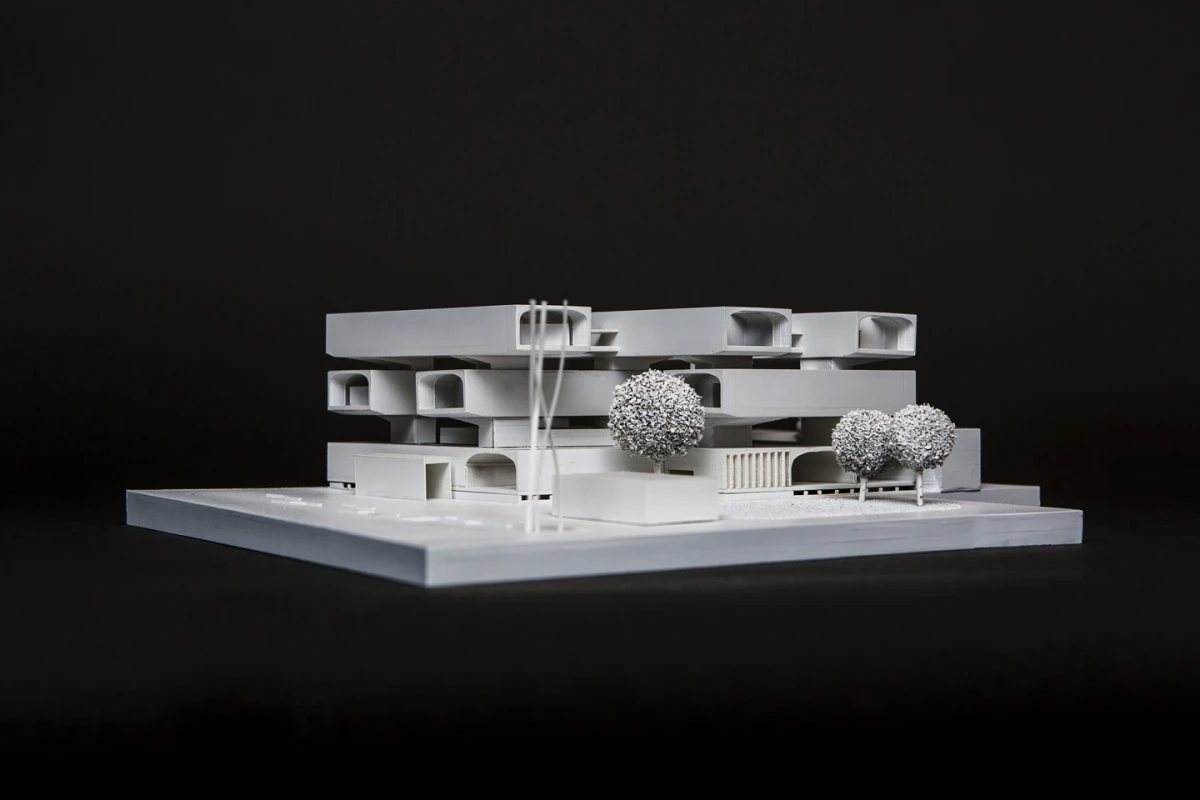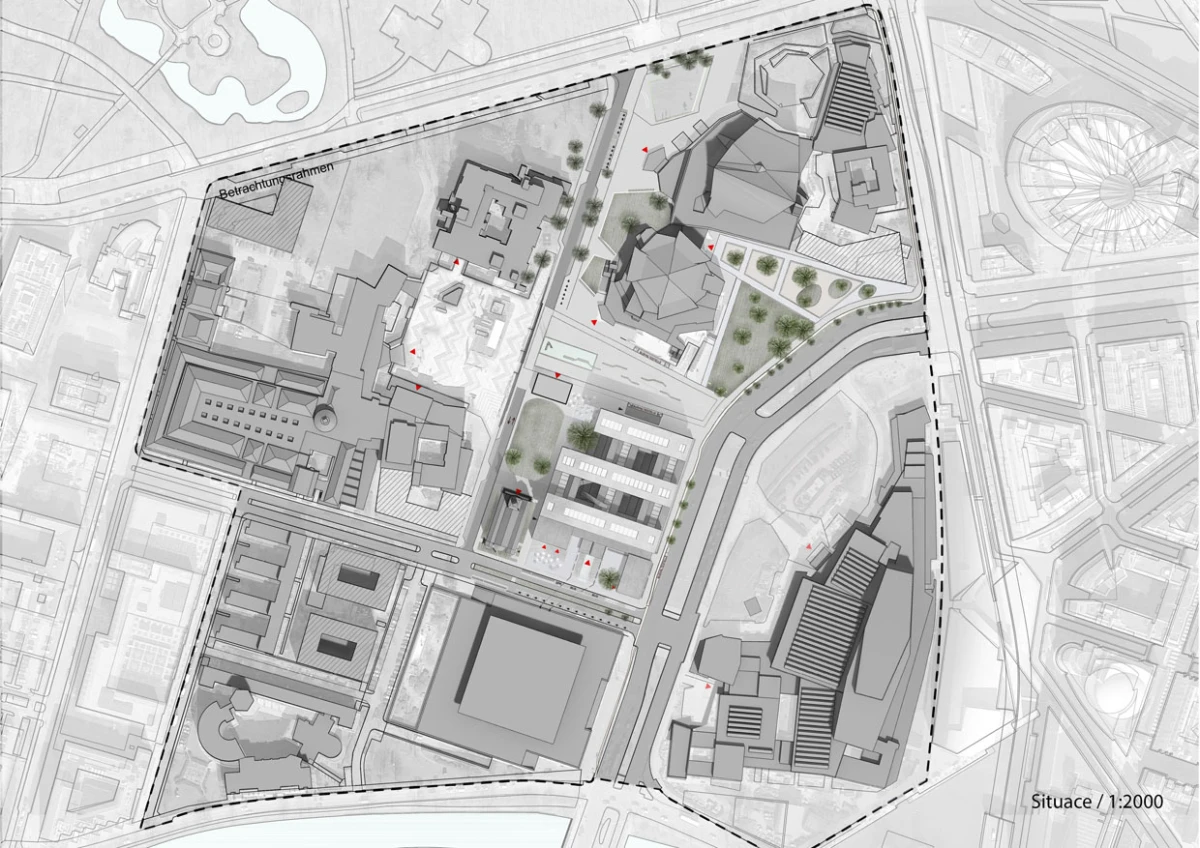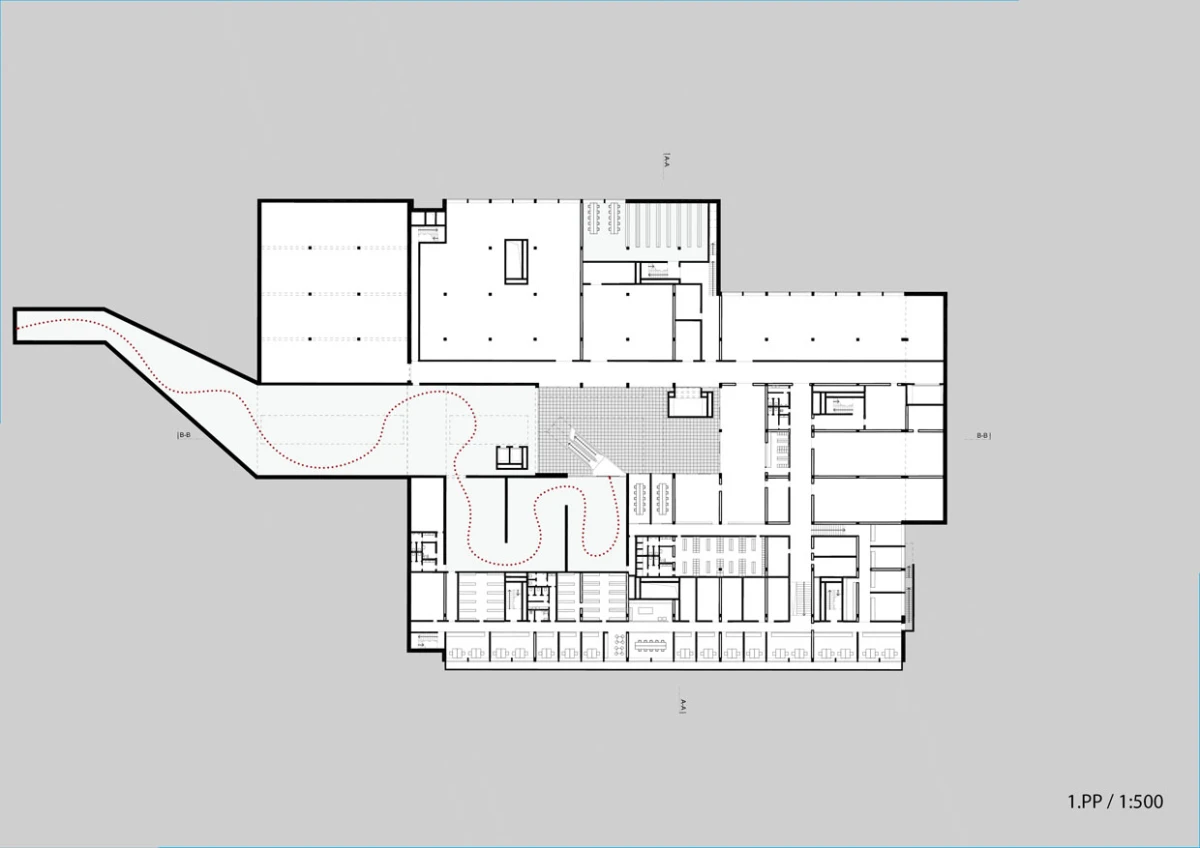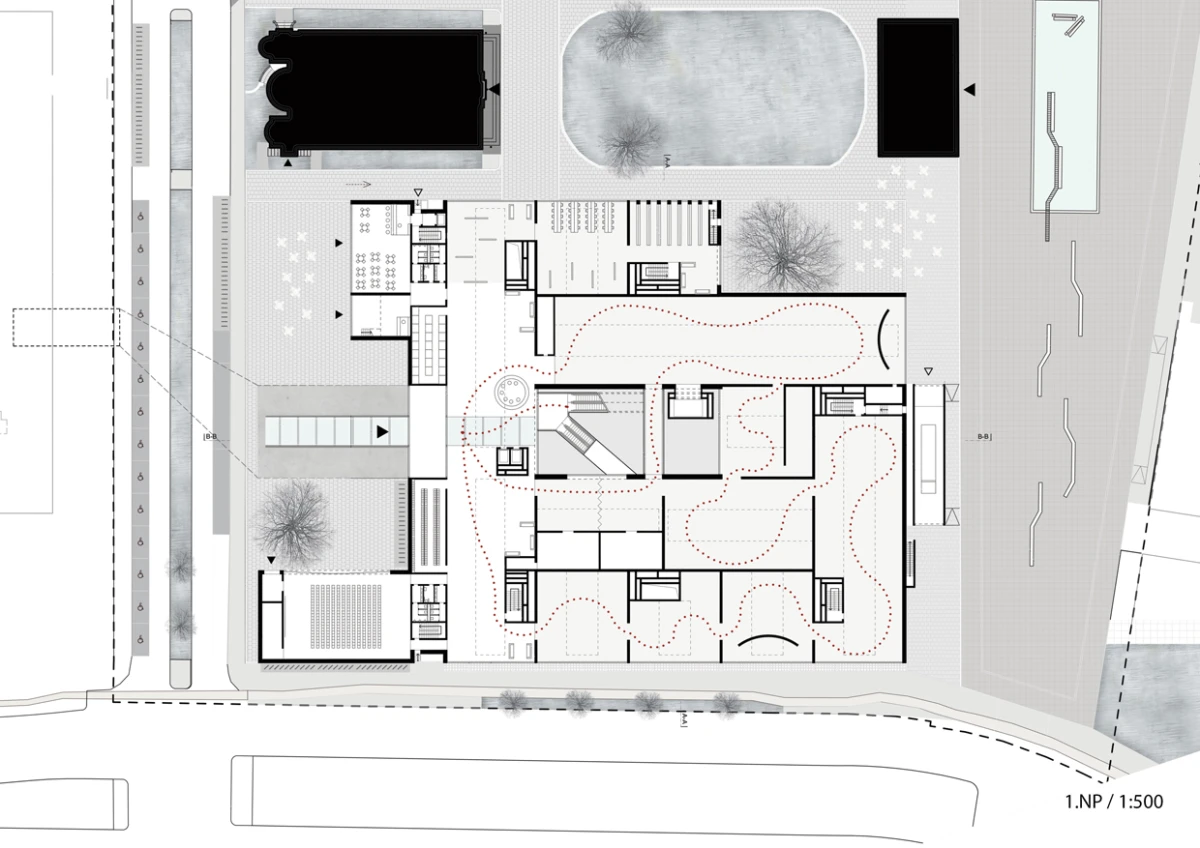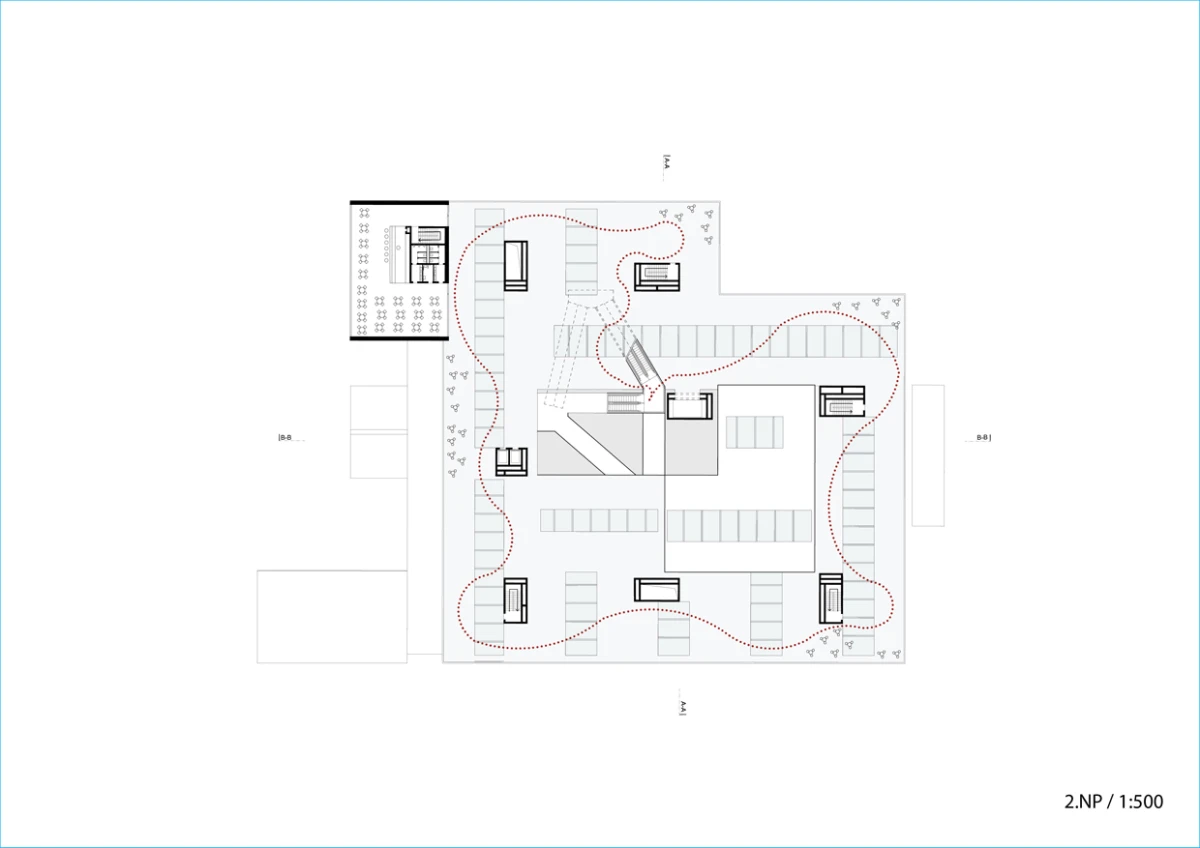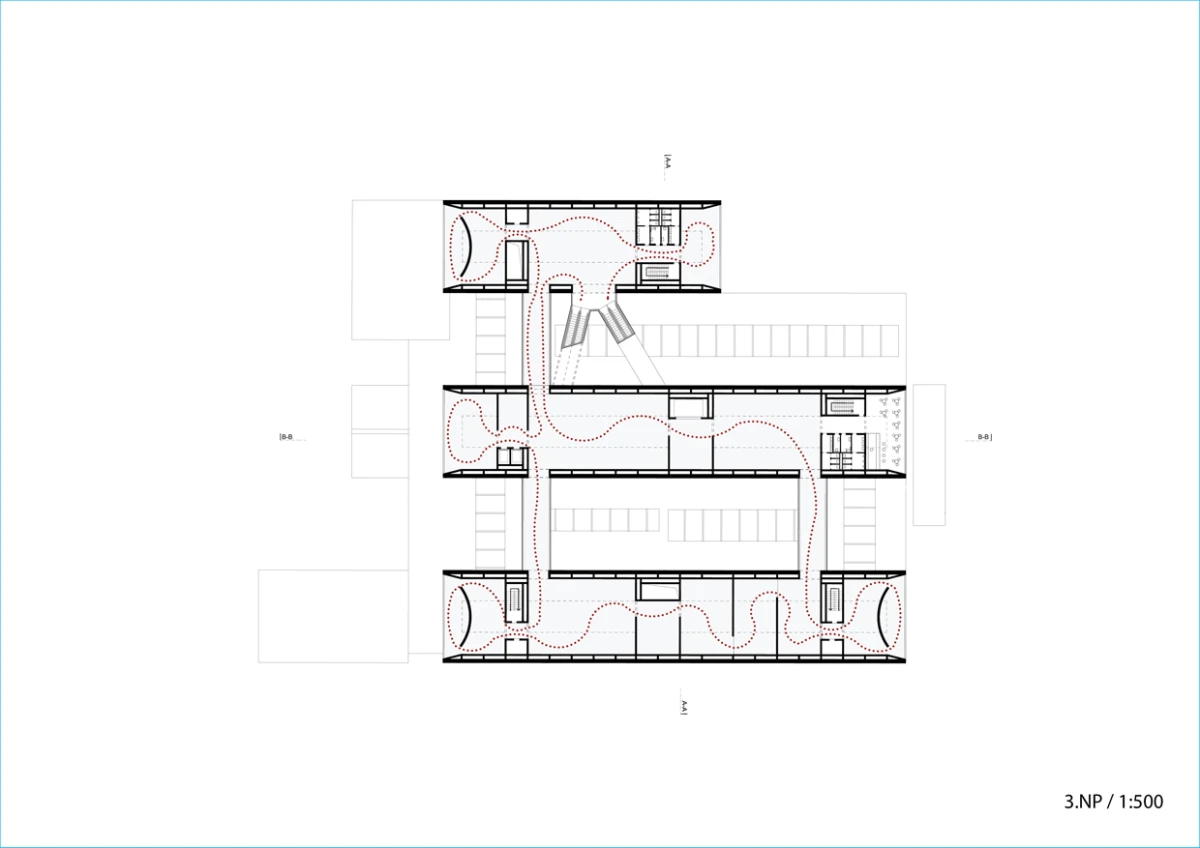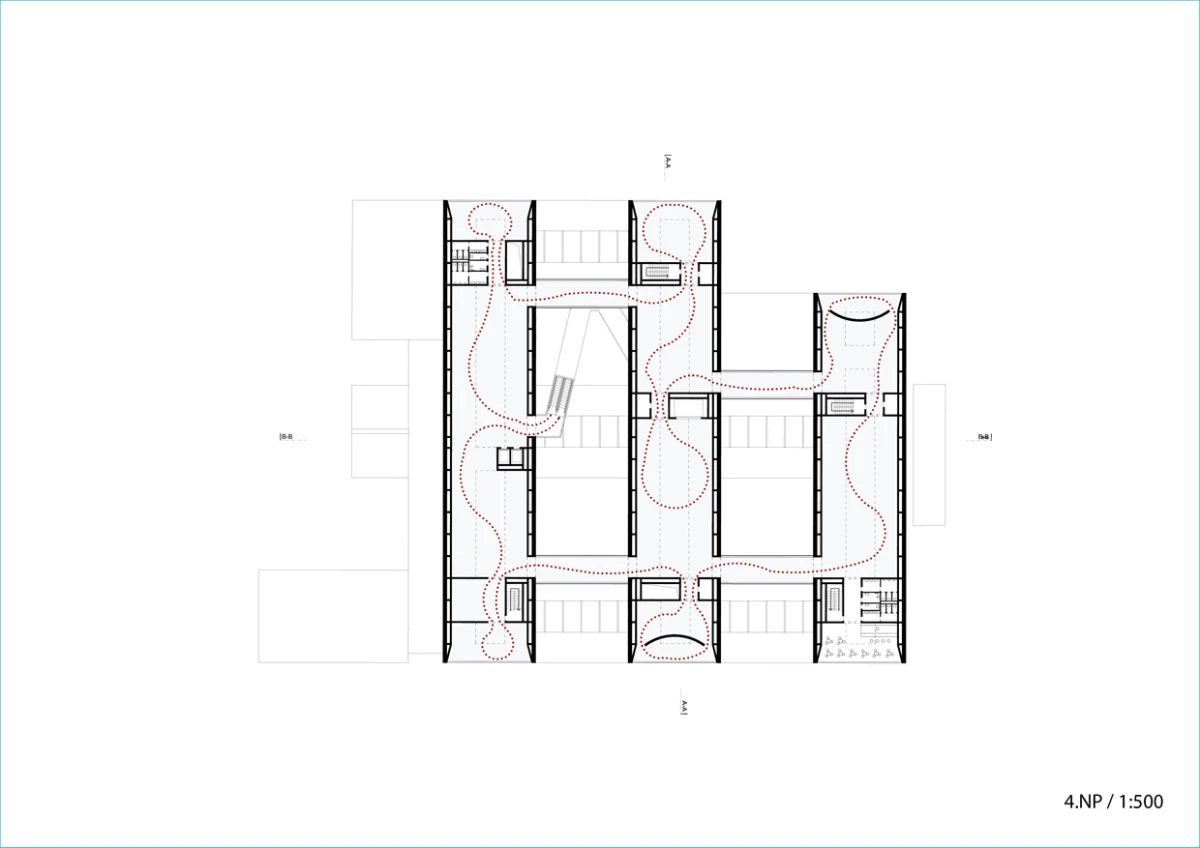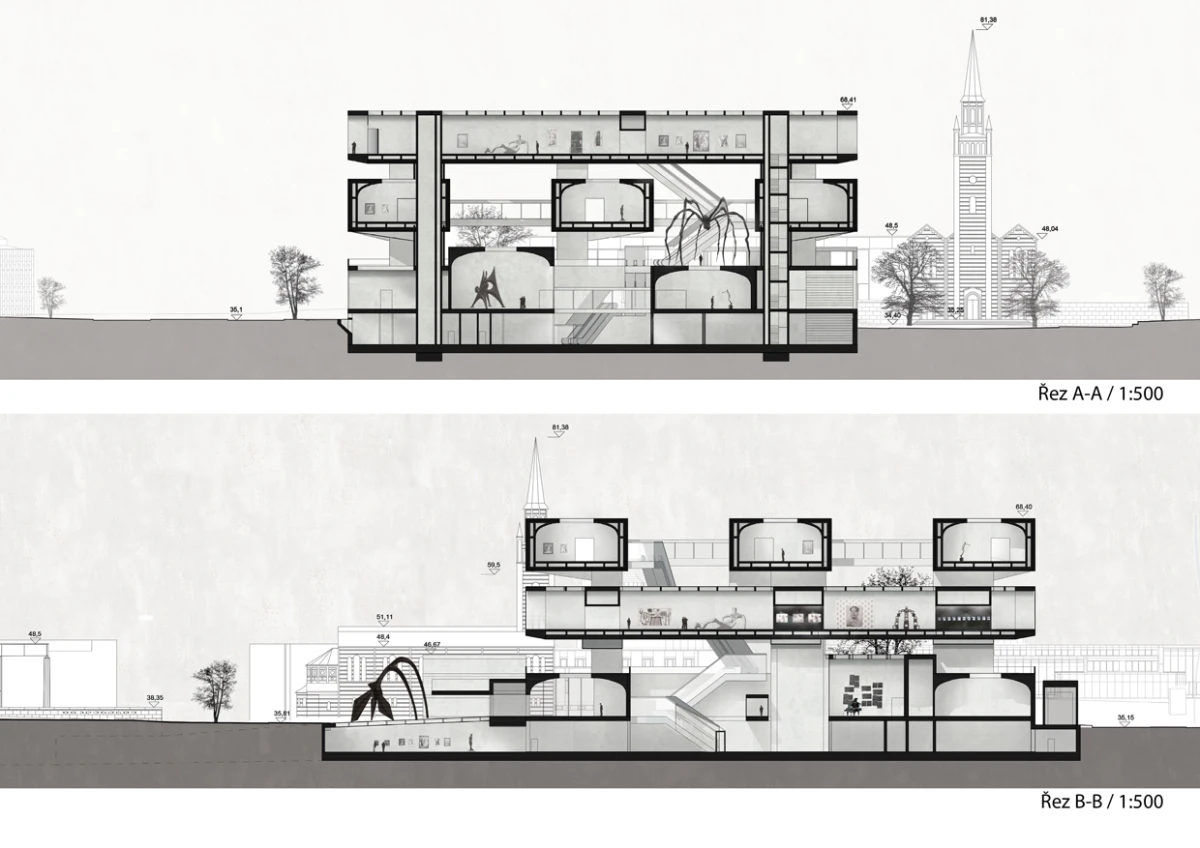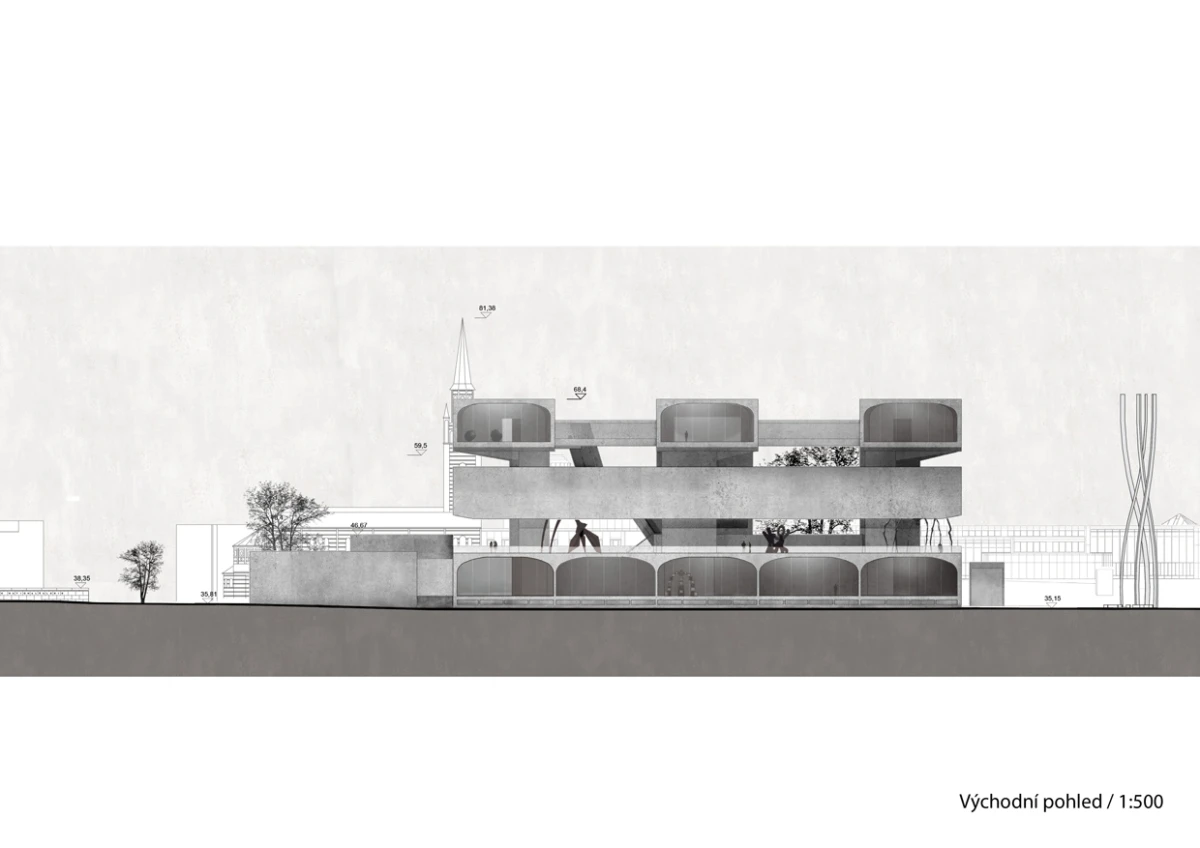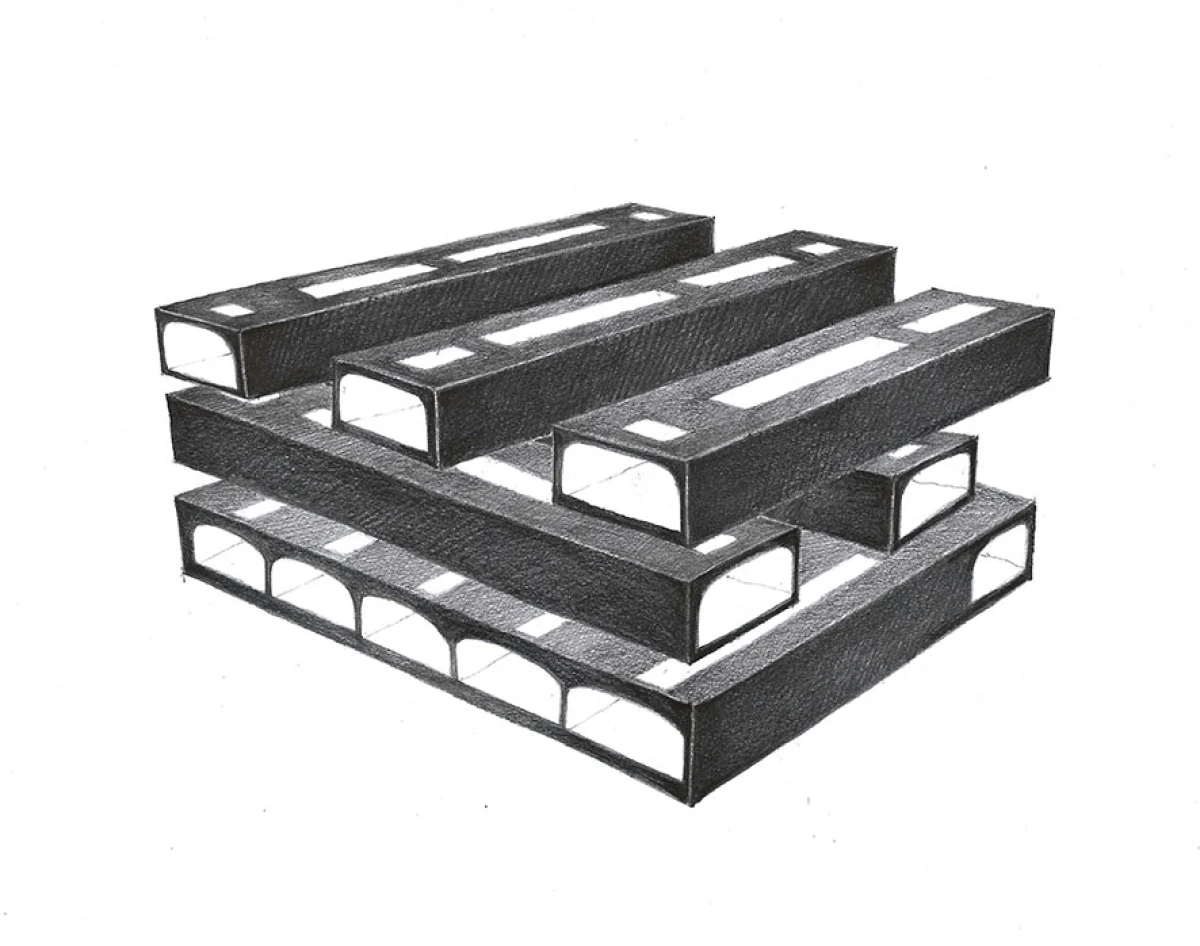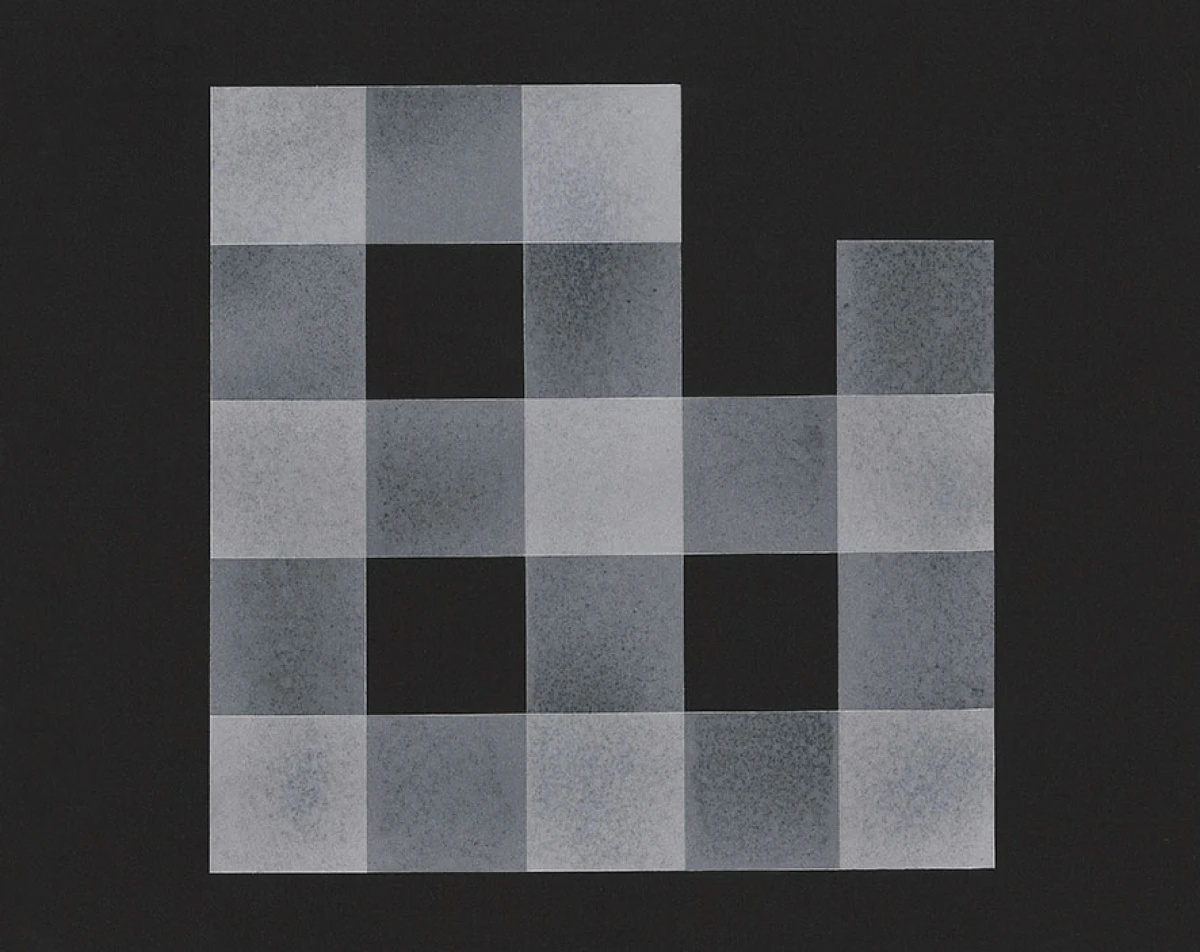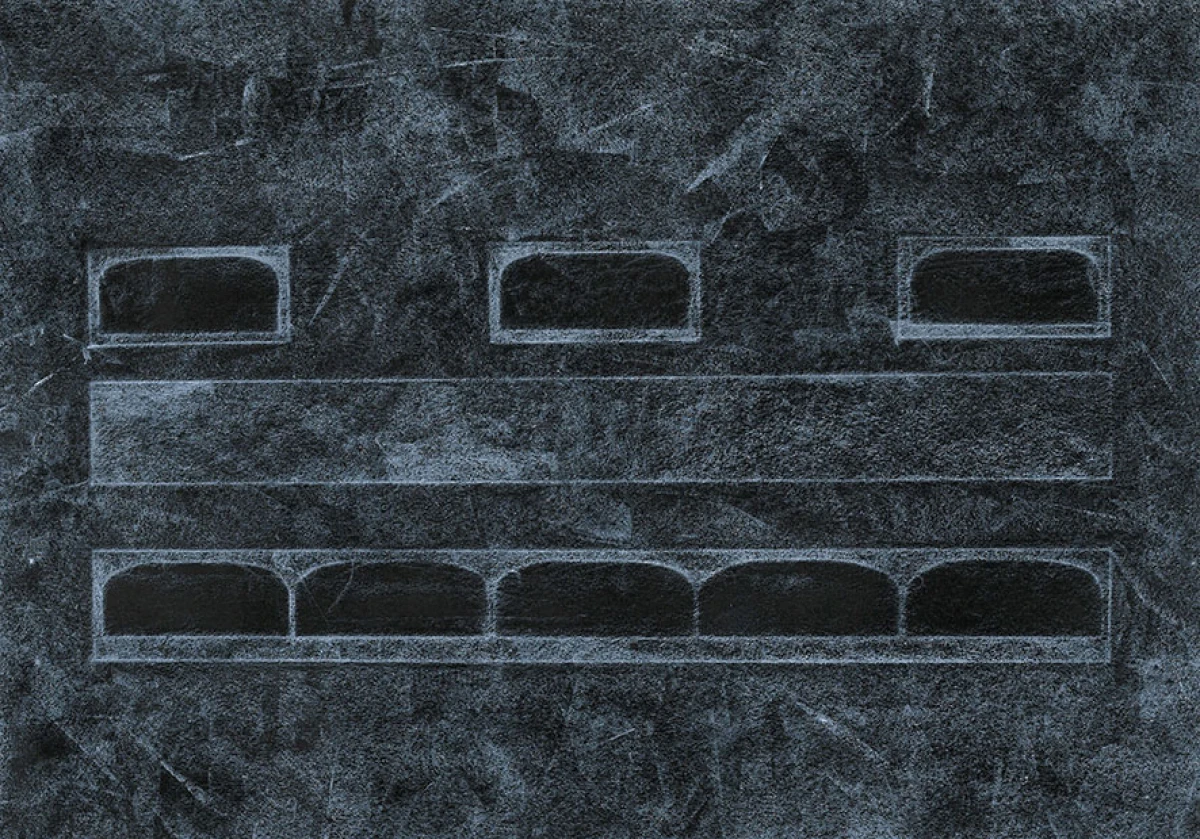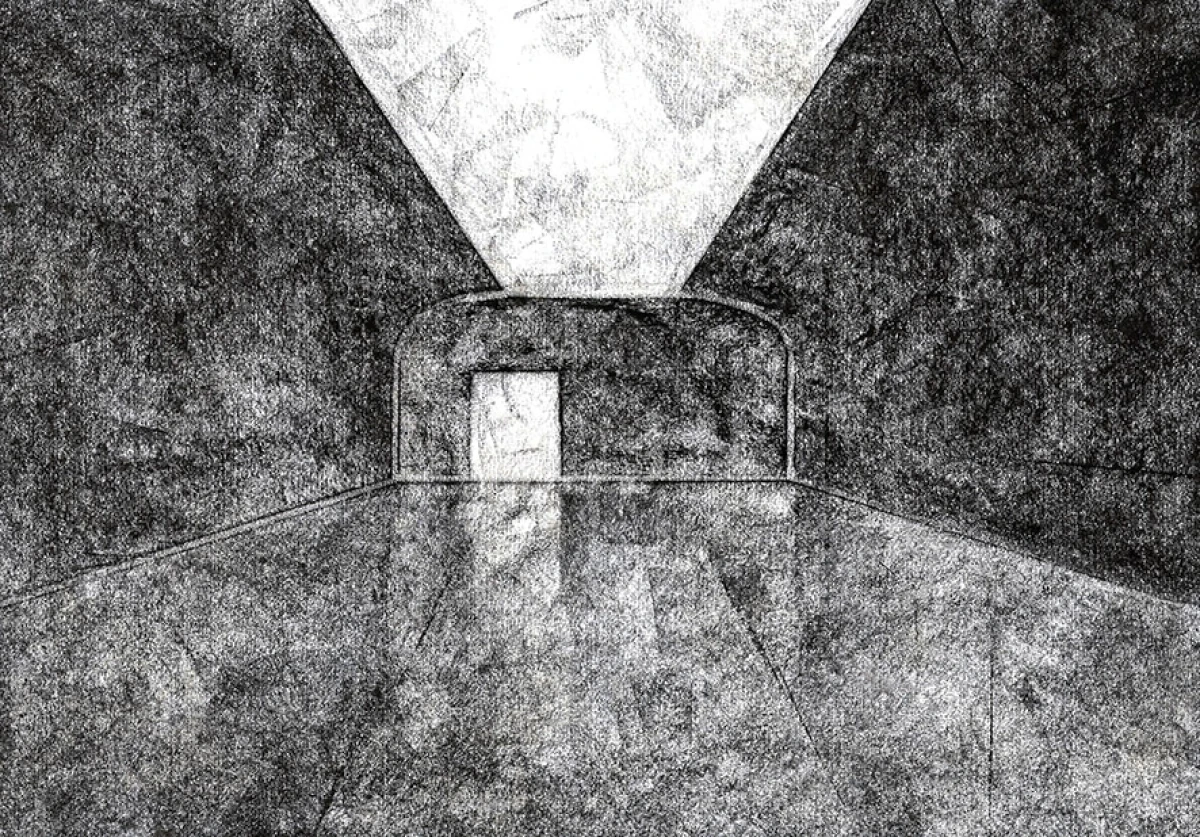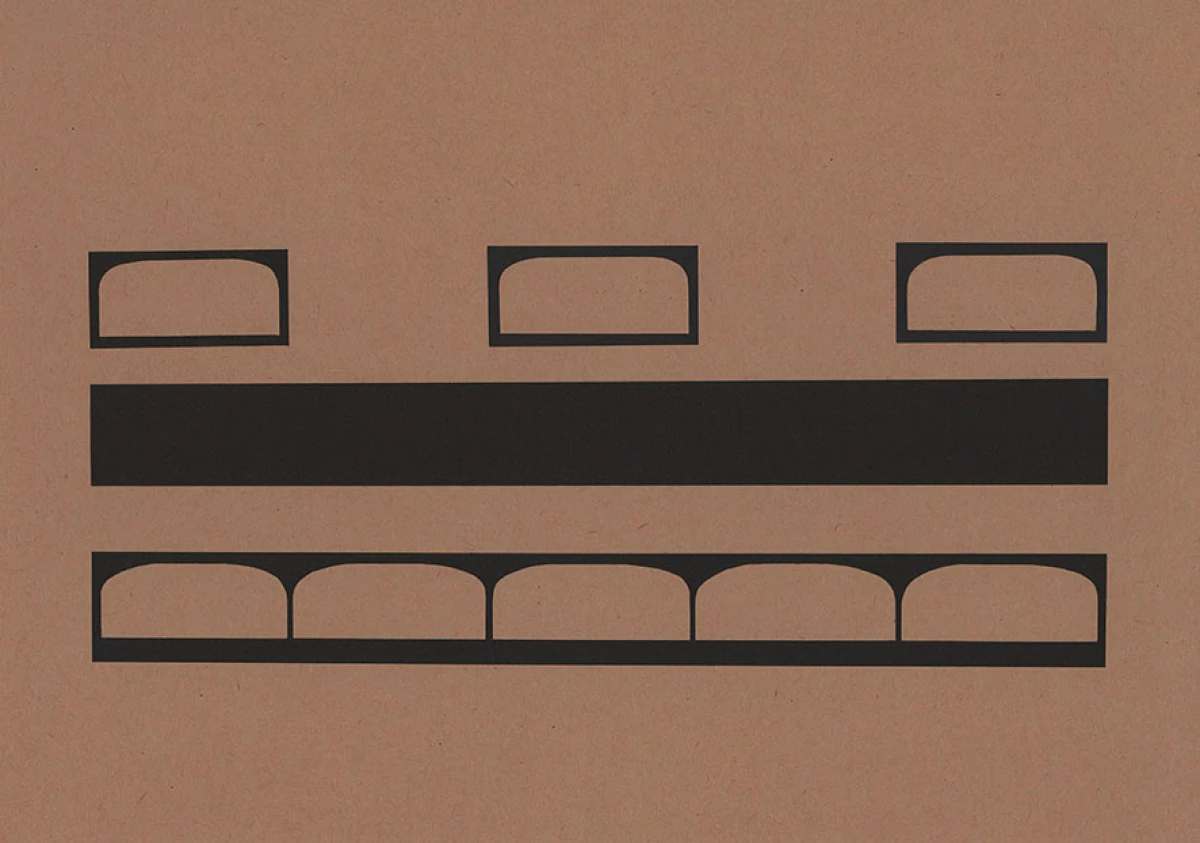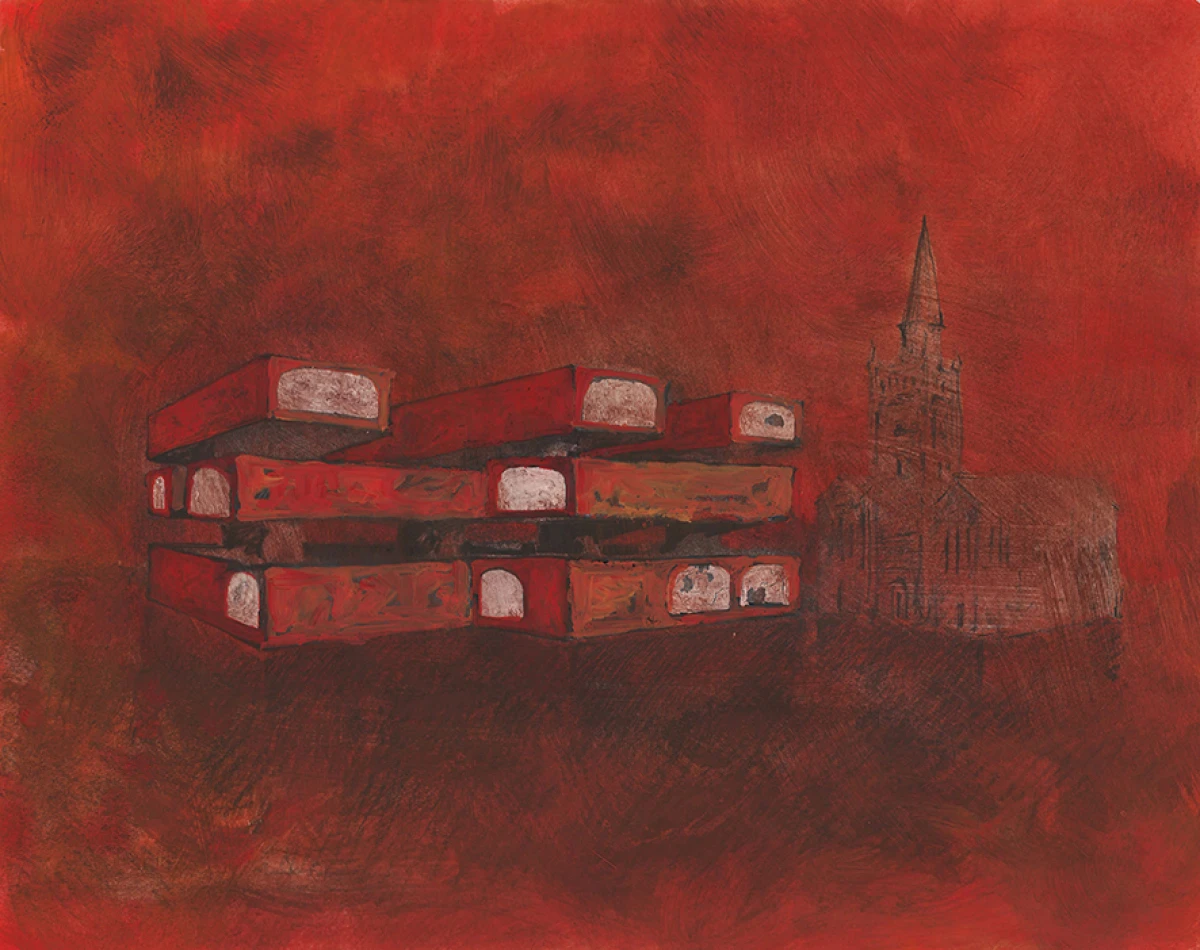Museum of the 20th century in Berlin
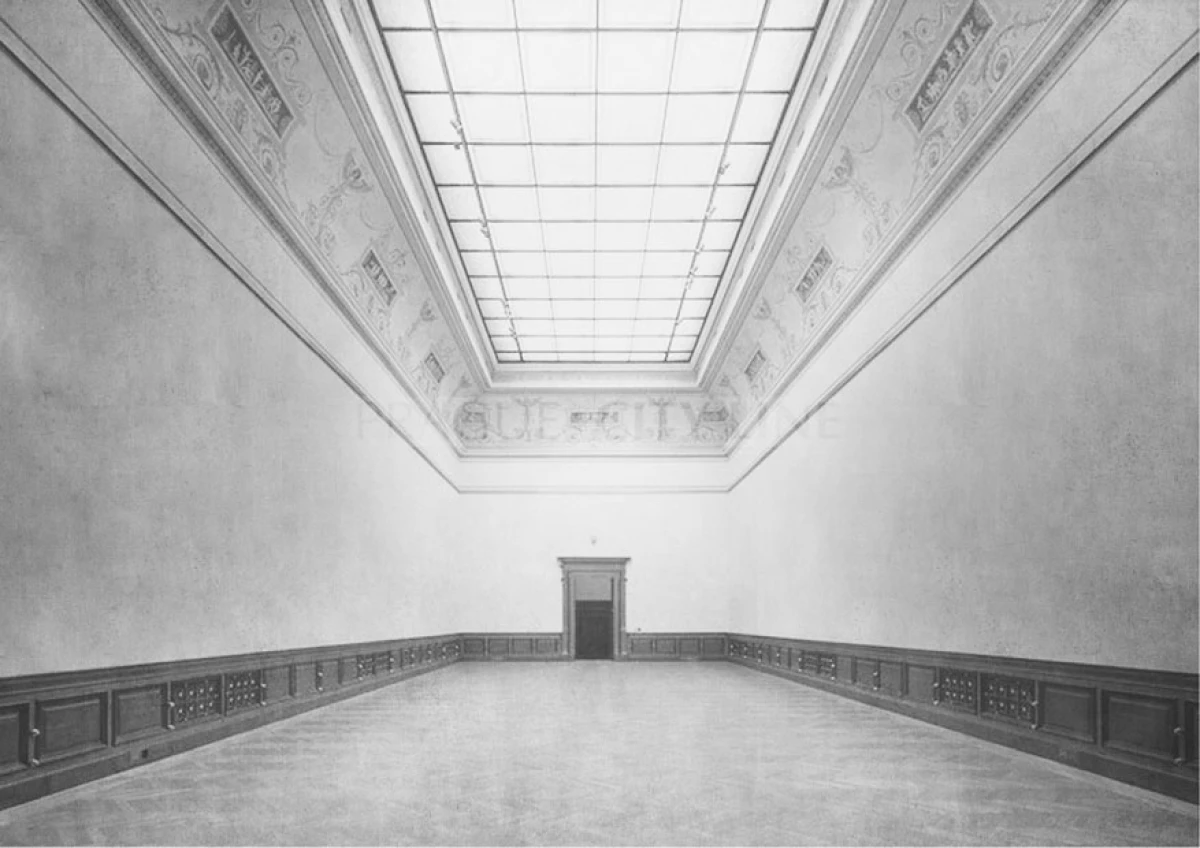
| Study | 2015 |
| Project | |
| Realization | |
| Authors | Jan Bárta, Jitka Brablecová, Petra Hrubešová, Michaela Kloudová, Jan Šépka |
The resolution of the Museum of the 20th Century in the vicinity of the Neue Nationalgalerie by Mies van der Rohe, the Philharmonic and the State Library by Hans Scharoun, moreover in immediate connection to the church of St Matthäus, as the original dominant feature of the place, is a difficult task. It is a place that does not have a precisely defined boundary or a network of streets. The individual buildings act in the territory as unique solitaires, which do not have the ambition to integrate into the grown system of the city. All three of the mentioned buildings are also, even with hindsight, considered to be certain symbols, both in terms of typology and architecture. Our conception tries to build on this world or distinctly dominant buildings. The philosophy of the proposal is spatial grid, which allows light into its interior, as the primary upper lighting of all the exhibition rooms. Daylight this reaches even to the ground floor of the entire building. The spatial grid is a partially transparent material, which in its arrangement makes clear its mission and the sense of its transmission of light. Our inspiration will thus turn to the halls of museums in the 19th century with natural lighting from above, which we consider to be ideal also for the present time. We do not want to leave visitors in the exhibition spaces only with overhead light, so possible views from the windows on the street have been deliberately made possible in several places. The new building is completely conceived as a cast of monolithic reinforced concrete.
